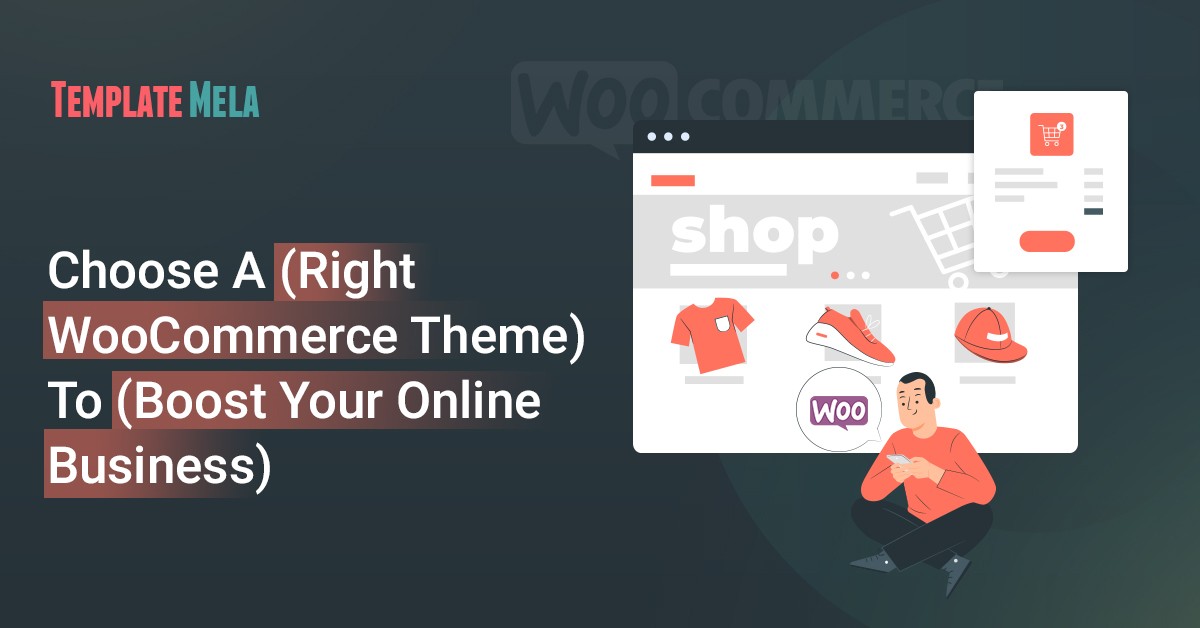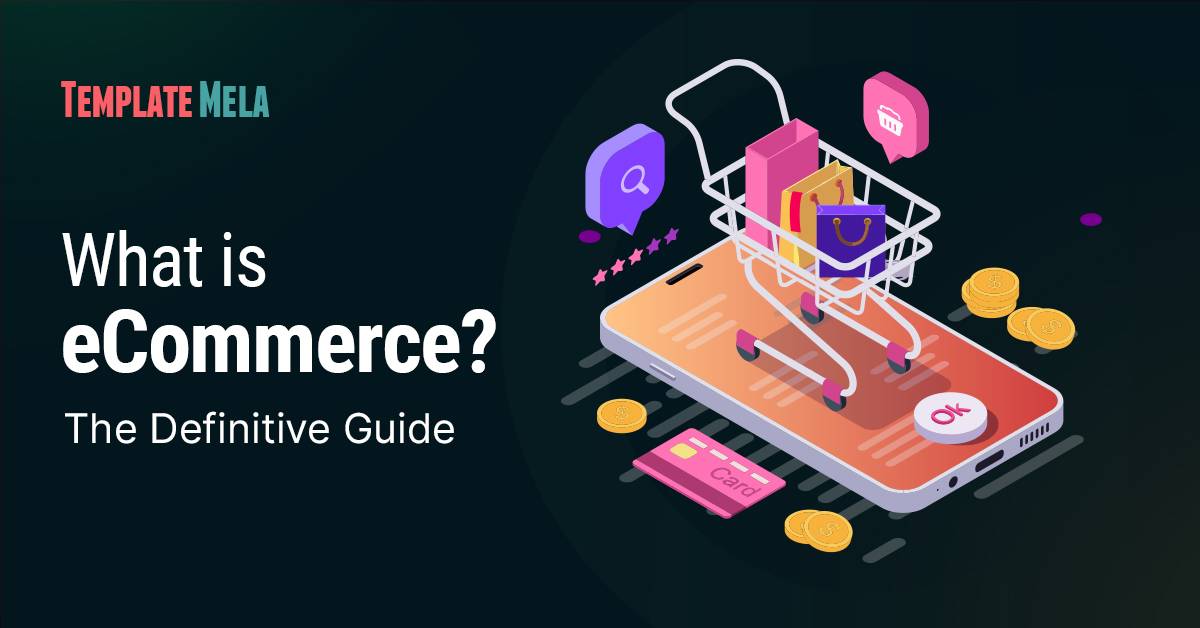7 Best eCommerce Store Conversion-Boosting Upselling and Cross-Selling Strategies
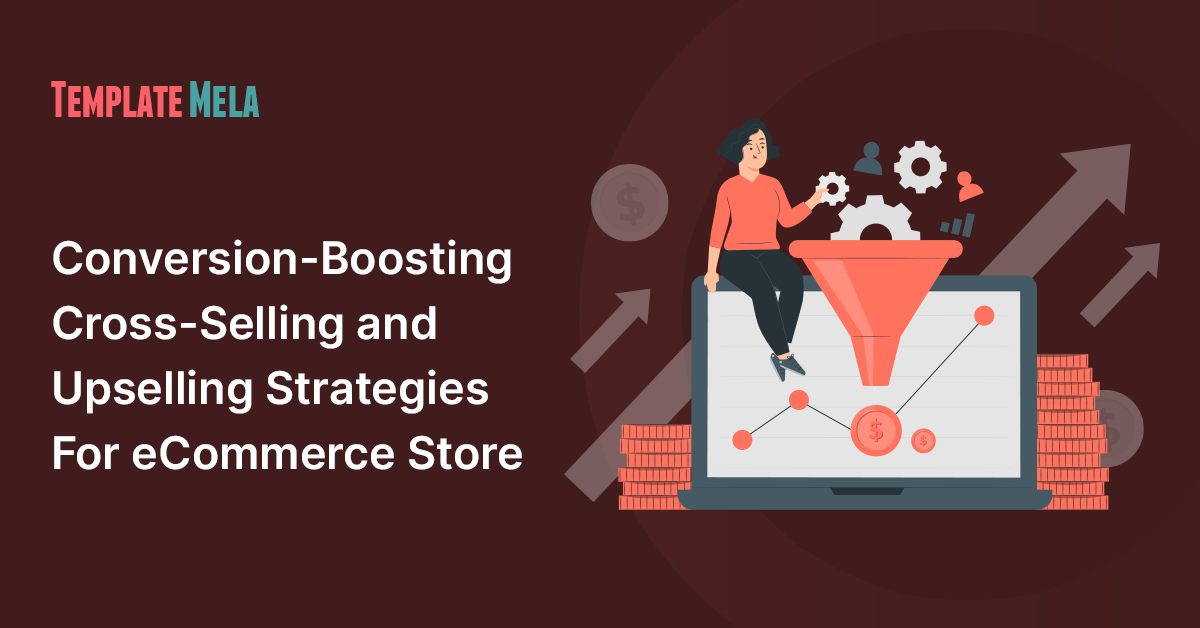
You’ve established an appealing and perfectly functional eCommerce store. And your store is doing a fantastic job. Your store receives constant purchases and traffic, allowing you to showcase your offering.
However, there are so many other eCommerce marketing tactics that can be brought to increase eCommerce sales.
Promotions and discounts, for example, are only beneficial in the short term.
Some, on the other hand, might take a bit longer to execute but are recognized to provide long-term benefits and a significant revenue boost.
So, it’s time to shift our consumers’ perceptions of the purchase process, as well as our own as marketers’ perceptions of the sales cycle.
We’ve all heard about the adverse implications of “cross-selling” and “upselling,” such as unethical sales tactics, pushy salesmen, and meandering meaningless sales speeches.
Upselling and cross-selling are two sales techniques that can help you increase revenue and customer engagement.
They allow you to promote more of your items to audiences and ensure that customers have a great experience with your business.
Cross-selling and upselling are important tactics for increasing business profit, but how do you determine when and how to use them?
Well, you don’t have to worry about it. Why?
In this piece, we’ll take a look at what upselling and cross-selling are, and why using upselling methods is so vital. What’s more, what tactics should you employ to achieve the best results?
Let’s get this started!
What Is Upselling?

Upselling is a technique for uplifting customers from their existing product or service.
This strategy will persuade them to spend a little more than they expected to spend on the existing solution.
Suggesting the products that can better fulfill their needs could be advantageous for you and your customer too.
This tactic generally took place on the product page just before the checkout page.
This assures that the consumer is not swayed by a last-minute upgrade offer just as he or she is about to purchase an item.
For example, when a customer is about to buy a $700 laptop, you may persuade them to upgrade to one with a faster CPU and more storage space for $950.
Upselling is a marketing strategy that focuses on a certain group of customers who are willing to spend more money for a higher-quality variant of a commodity.
What Is Cross-Selling?
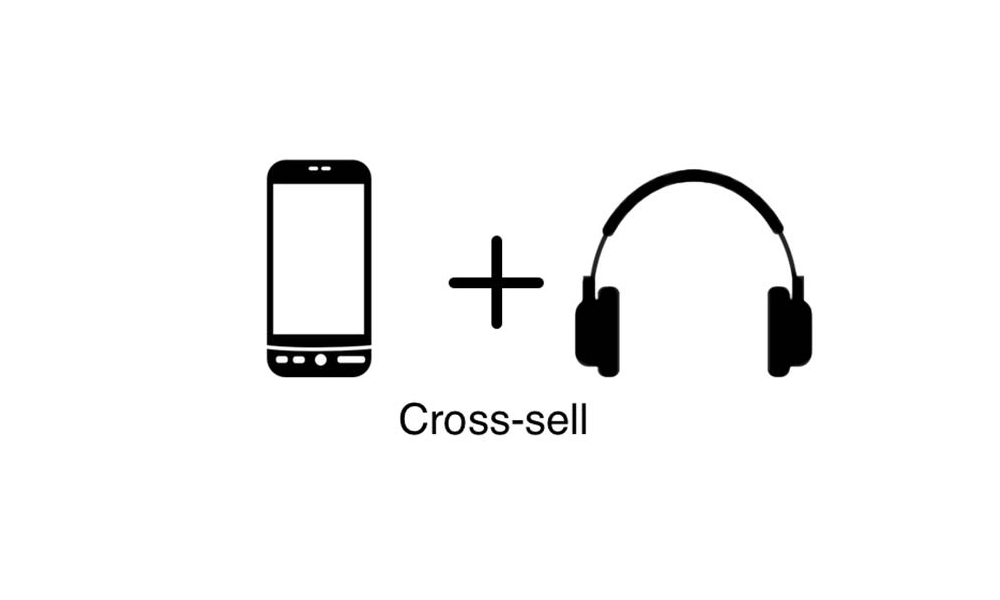
Cross-selling is a bit different tactic than Upselling.
Cross-selling is an approach that involves suggesting products or services that might go well with the item your consumers are considering.
Cross-selling can help you increase client loyalty.
It would be simple to make your customer feel understood simply by recommending the most appropriate products to complement their current surfed product.
This strategy generally involves presenting completely different items from the one they selected.
They might, however, just enhance the capacity of the initial product.
Here on the product page, for example, a business could recommend that a consumer purchase a coffee scoop with their coffee beans.
Importance Of Upselling & Cross-Selling
Both approaches, upselling and cross-selling, are applied with the purpose of raising revenues from a specific purchase.
It comes from instilling a necessity in the client, and when the product is up-sold at a fraction of the price, the buyer is more receptive to being ‘up-sold.’ It all comes down to making the appropriate recommendations.
It contributes to the brand’s reputation and loyalty.
On the other hand, No consumer likes a pushy salesperson.
Although upselling and cross-selling are excellent ways to boost your company’s earnings, they must be executed without losing your clients.
Using upselling and cross-selling techniques, you may increase revenue by 10% to 30%.
Upselling and cross-selling can benefit your company in the following ways
Increased Retention Rate –
People buy items and services to address problems, excluding impulsive purchases.
They are conscious about the issue, however they may not be sure of the most effective solution.
When done well, upselling or cross-selling provides the consumer with more value than they expected.
It has the potential to boost revenue by up to 43% while also enhancing client retention.
Improved Average Order Value –
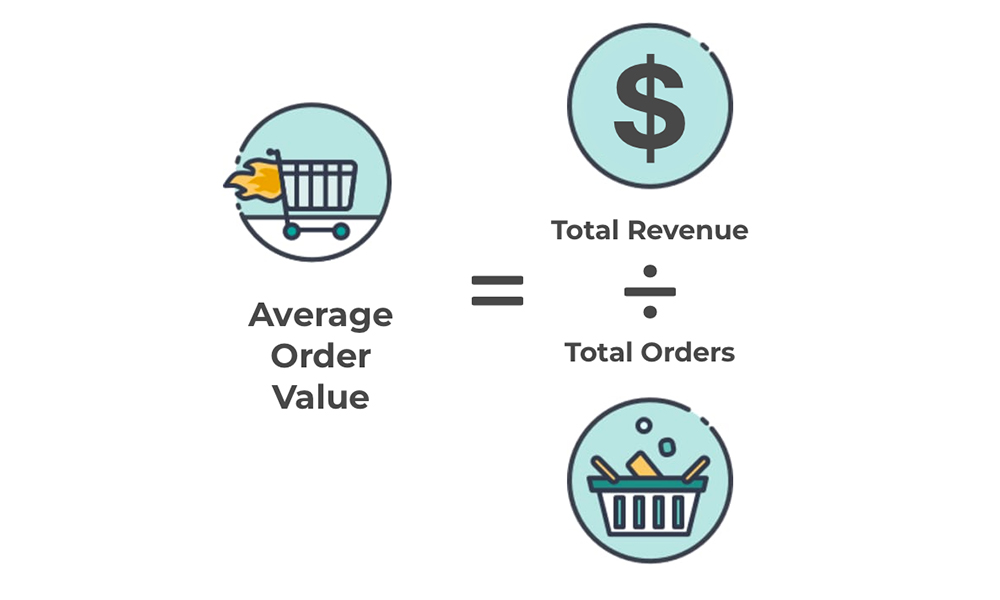
Cross-selling and upselling raise the average order value of your customers, resulting in increased revenue and profit at a minimal additional expense.
You’ve already invested money in marketing to attract the buyer to your eCommerce site, so enhancing order value is critical to Profitability.
If a firm handles a customer support issue honestly, even though the outcome is not in their favor, 60 to 70% of consumers will do business with them again.
Selling to a fresh prospect has a 5-20% chance of success so Upselling current clients is a low-cost strategy to increase lifetime value.
You now understand the value of upselling and cross-selling. So, let’s have a look at some tactics for maximizing revenue from them.
Valuable Upselling And Cross-selling Strategies
Let’s have a look at the most effective methods for both sales tactics.
1.Evaluate Your Audience
As an entrepreneur, before implementing any sales plan, you need to evaluate your prospects to get a clear picture of who you will present your deals and discounts to.
And, in order to evaluate your target audience, you need first to do an in-depth audit of their purchasing journey and look at several attributes.
CRM allows you to trace your customer’s journey.
With an integrated CRM, you will be able to understand individual clients that will help you to Cross-sell or Upsell products.
Using customer lifecycle analytics, you can anticipate the willingness of consumers to upsell or cross-sell offers.
Thus, after evaluating data, you can choose who you want to engage and what items you want to upsell and cross-sell to them that is most appropriate to their individual preferences.
Also, have a better understanding of which sales strategy will benefit you the most.
2.Choose The Right Place For Upselling & Cross-selling
After knowing your customer and which strategy you should apply, analyze the most prominent page to implement cross-sell or upsell and convert your audience.
You can implement them on the homepage, checkout page, product page itself, landing page, or any other page that your audience will find more interesting.
If you’re not sure which sites are effective for you, you may utilize tools like Usabilla, Qualaroo, Google Analytics, and others.
Well, if you are unaware of the pages which work for you, you can use tools such as Usabilla, Qualaroo, Google Analytics, and many more.
It will display the impressions made by all of your consumers in response to the factors given.
When used correctly on effective sites, upsells and cross-sells may help you easily raise your profits.
You might leverage the “Featured Products” segment of your product categories, which is one of the most viewed web pages on an eCommerce website, to offer higher-priced merchandise.
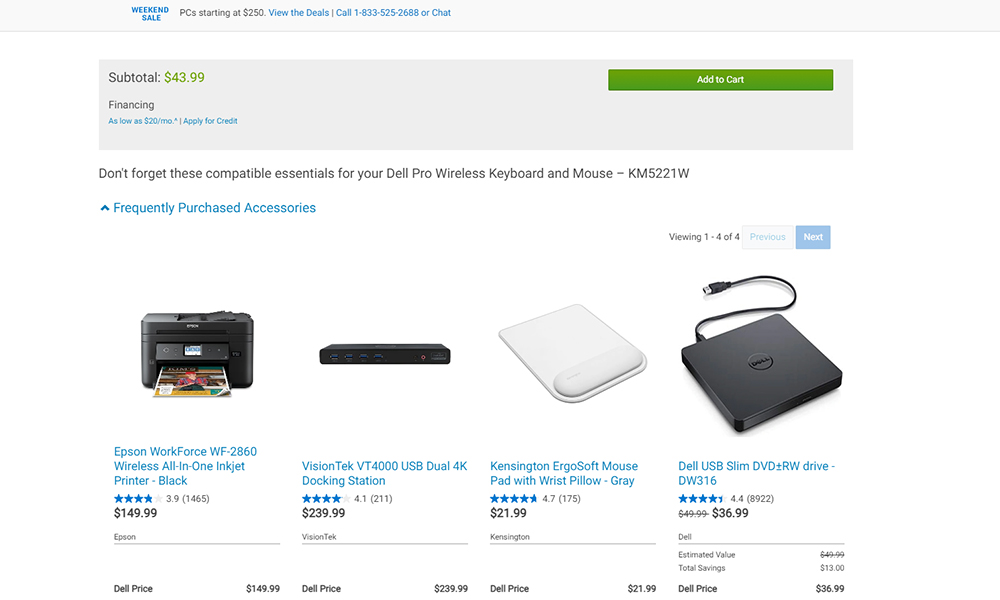
Look at how Dell’s Website does this. They promote the matching products on their cart page:
3.Choose The Effective Time
It all comes down to timing when it comes to upselling and cross-selling. To get the most out of these sales strategies, you must strike at the correct moment.
Monitor your visitors’ activity with the sales cycle.
And, just when a buyer is about to buy a product, come up with other items that make the initial product more interesting.
Try to cross-sell or Upsell them!
In fact, you can create a sense of urgency since people are more inclined to buy something if they are afraid of losing out.
You might suggest a similar product with more features and a discount, or you can generate urgency by offering a bundle of relevant items for a limited time.
Additionally, attaching a countdown timer to a basic banner image promoting the offer could work.
Regardless, don’t forget to do it on time!!!
4.Product Relevancy Is Must
Whether you are making approaches for cross-selling or upselling, product relevancy is a must.
While you recommend products to your consumers, they must be relevant to their interests and the product they purchased initially.
Upselling and cross-selling can help you increase your sales while requiring less work.
However, understanding what to recommend is the only point of focus.
You can’t recommend any random products or services to your consumers as an eCommerce website.
The thing you’re attempting to upsell to the buyer ought to be appropriate to his or her interests.
When it comes to cross-sell, it has been proven that displaying accessories or complementary items is usually useful.
When you try to offer a product that isn’t relevant, the buyer becomes disappointed with the brand.
5.Take Care Of Product Price
Another major aspect of Cross-Selling or Upselling is the product price. It plays a vital role in the success of both strategies.
It is recommended that the upsell product’s price not be increased by more than 25% to 40% of the first product’s price.
It would be irrational for a user to suggest a $200 watch as an alternative to a $70 watch.
Suggest something worth $95 – $110, as well as multiple logical reasons why the consumer should spend extra and upgrade the initial product.
On the other hand, when considering a cross-selling strategy, evaluate both the product pricing and its relevance.
If a customer purchases a $100 pair of shoes, you should recommend a $15 pair of socks; but, if a consumer purchases a $15 pair of socks, you should not try to sell them a $100 pair of shoes.
The less the price of a product you wish to cross-sell, the less chance and mental effort it takes to accept the offer.
Select a complimentary item that is less than half the price of your primary product when creating cross-sells. Your conversion rates will remain high as a result of this strategy.
6.Email Retargeting
Email marketing also provides several options for cross-selling and up-selling items.
However, if customers don’t think about your upsells when making a purchase, you may contact them afterward.
Congratulate customers on their orders and suggest them upsell or cross-sell items depending on their shopping.
When you have repeat consumers who abandon their carts, it is not usually because they have given up on the items.
In this instance, don’t be hesitant to remind them about the items they left in their basket.
7.Provide Free Delivery For Orders Over A Certain Amount
The most common cause for customers abandoning their carts is high shipping prices. Thus you can understand why free delivery is such a strong inducement.
Furthermore, you may offer free delivery beyond a certain threshold to entice clients to buy a more costly product.
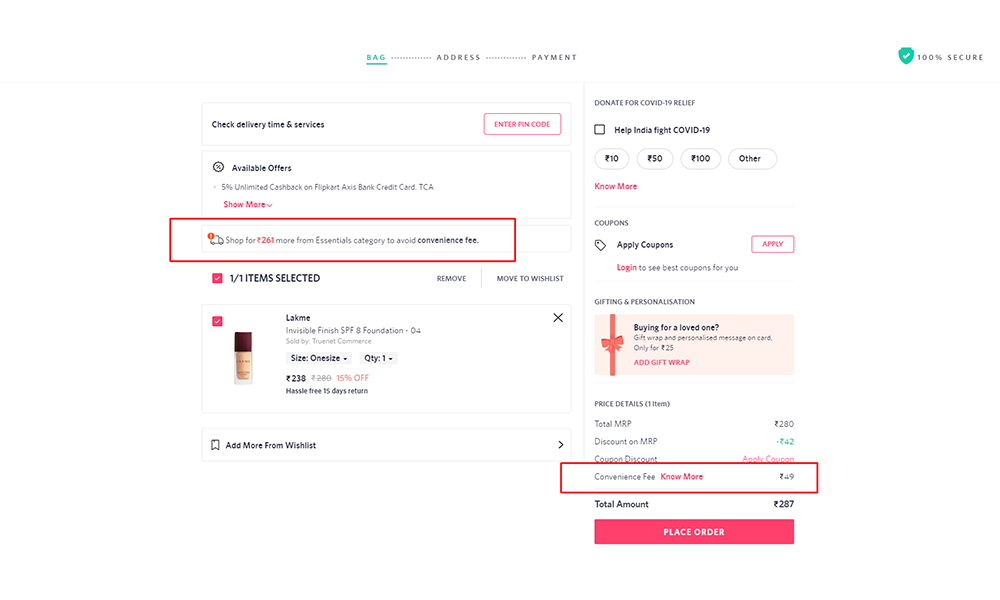
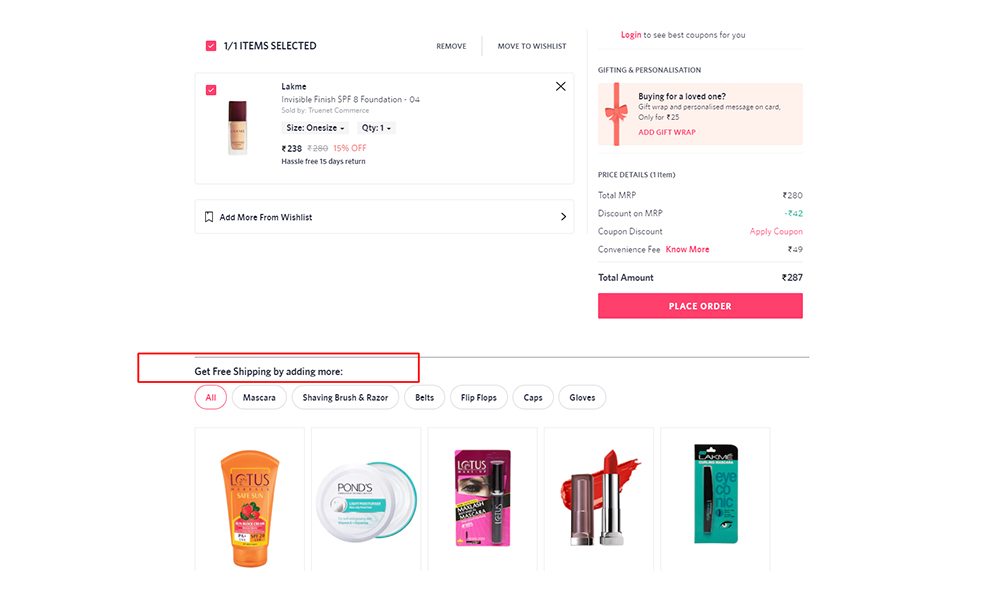
Customers at myntra.com receive a message that tells them how much more they ought to spend to earn free delivery. as well as a list of recommended items.
Closing Thoughts
An effective upsell and cross-sell campaign would not only raise sales revenue but will also enhance customer retention.
Note that the overall objective of your upsell and cross-sell offers is to provide quality to each and every order the consumer makes, not to earn profit.
You have everything you need to expand your organization by increasing sales and providing an enhanced experience for your clients.
Increasing your revenue will be a piece of cake if you adopt the guidelines provided above!



